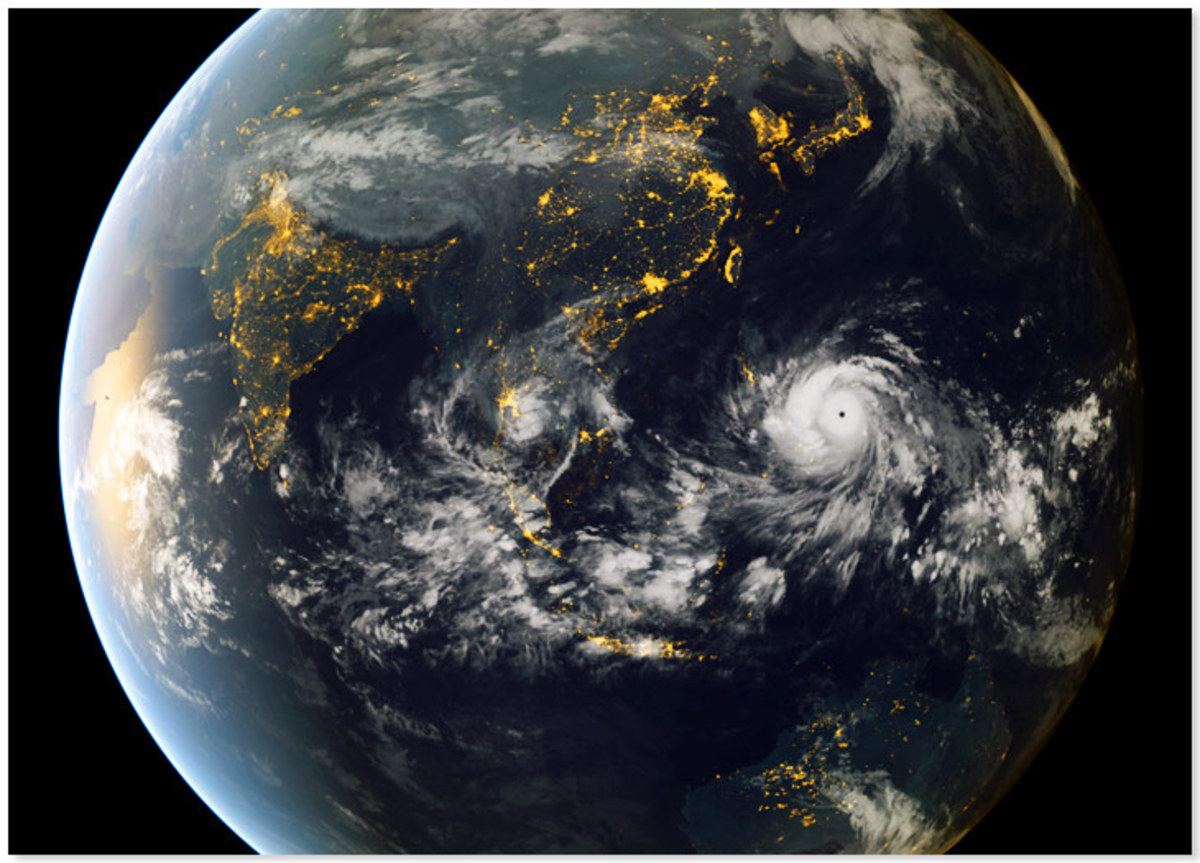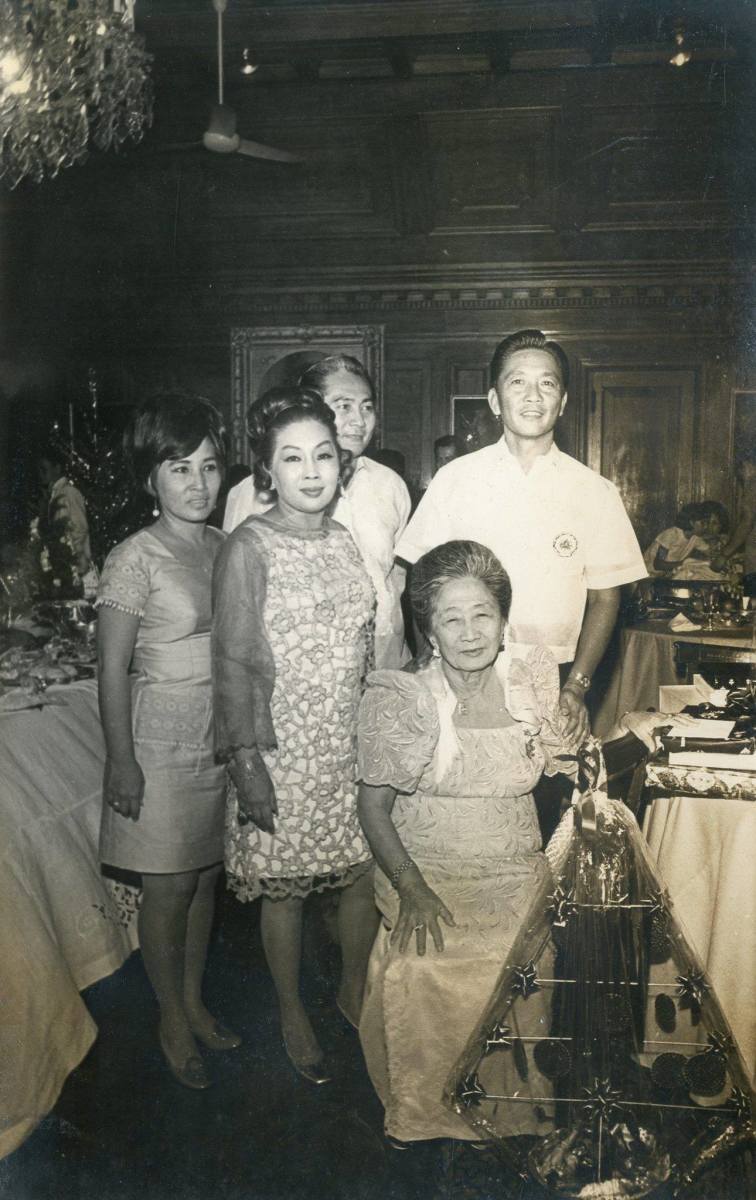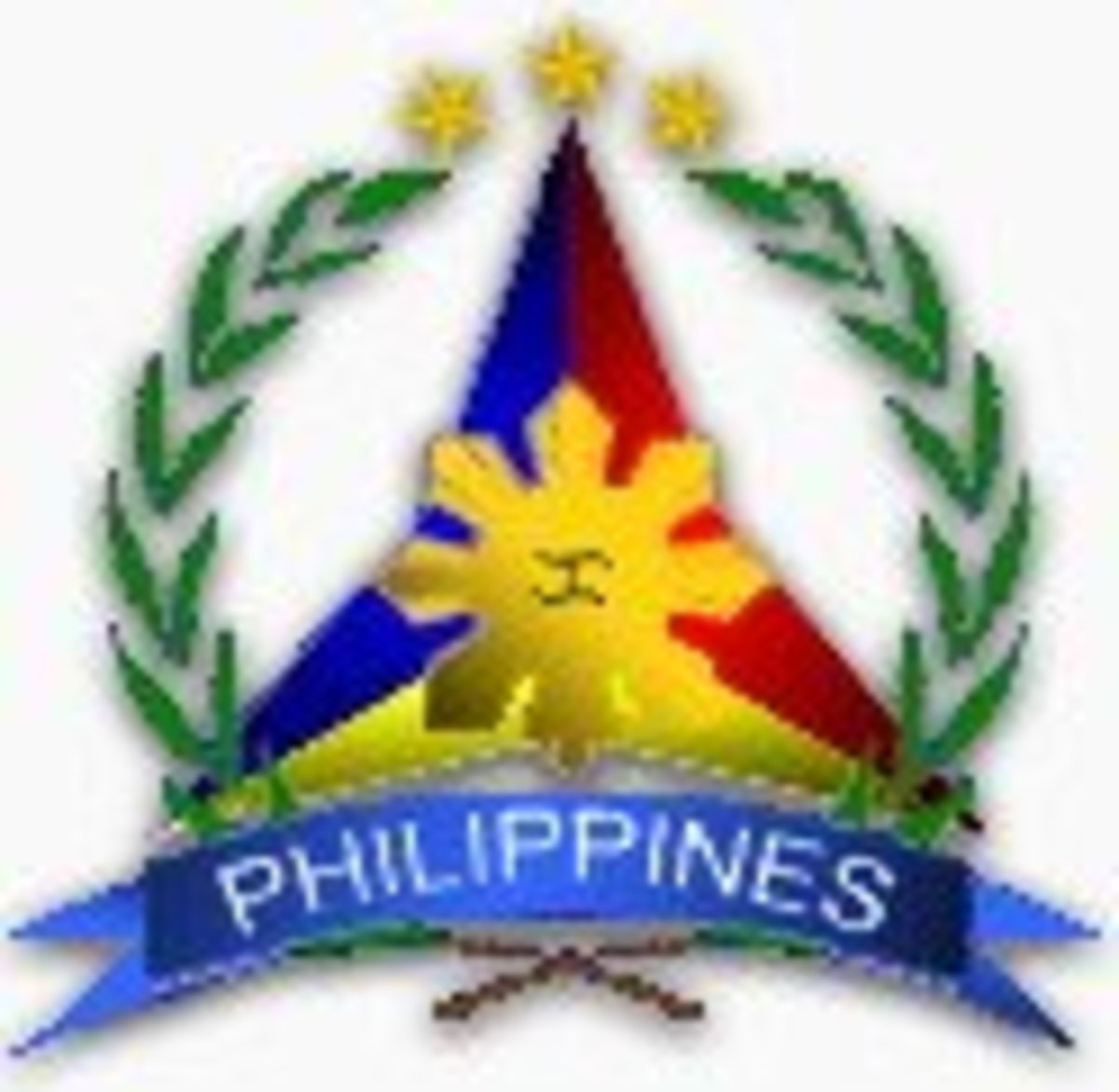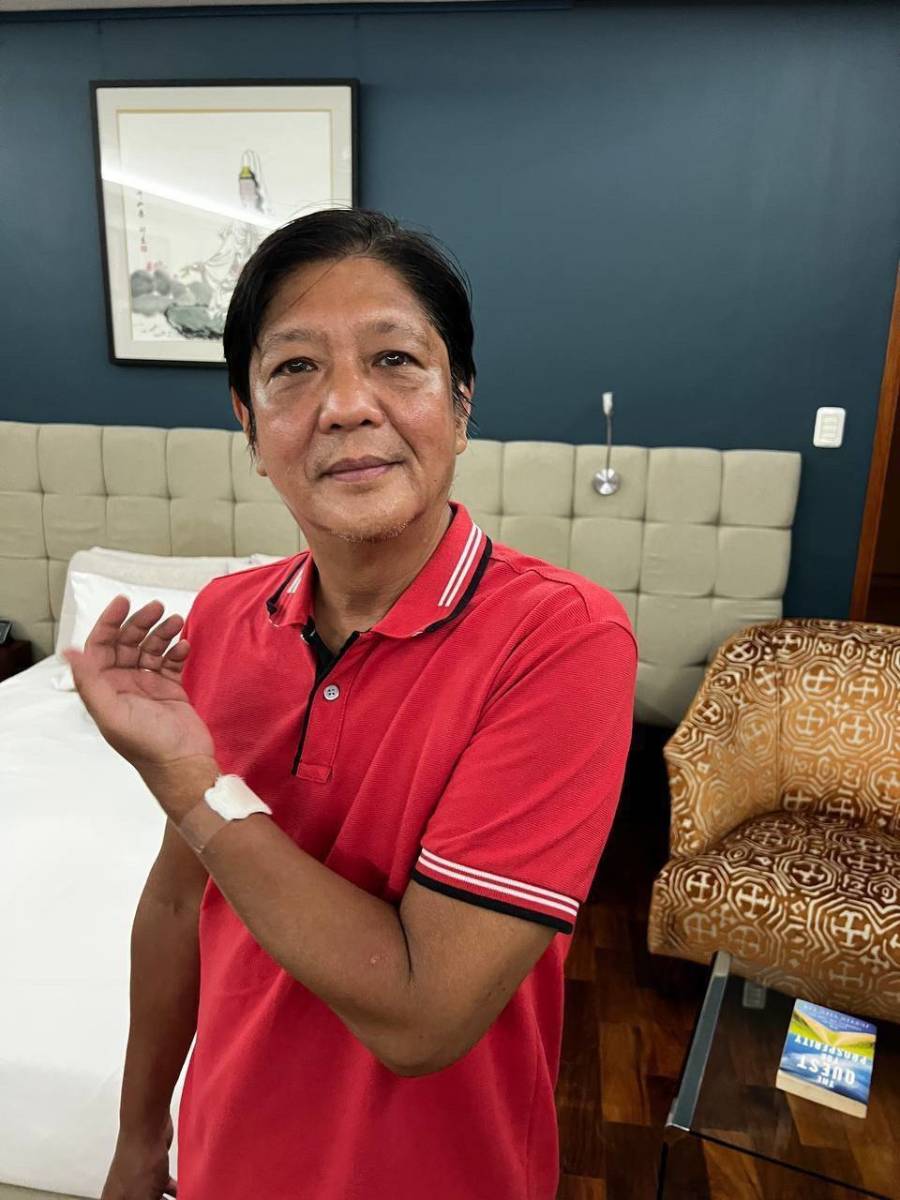Ultimate Way to Rehabilitate Tacloban and other Victims of Typhoon Haiyan/Yolanda
Damage done by supertyphoon Haiyan/Yolanda in Leyte (Photo by Bonn Clemencio)
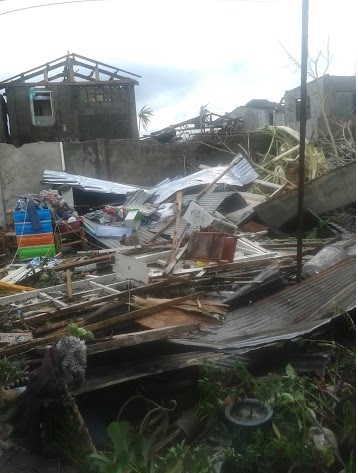
A rice farm from a broken up hacienda can give a family surplus for clothing, shelter, food, education, health care, and recreation. (Photo by Agkakabsat)

Another photo of damage done by supertyphoon Haiyan/Yolanda (Photo by Bonn Clemencio)
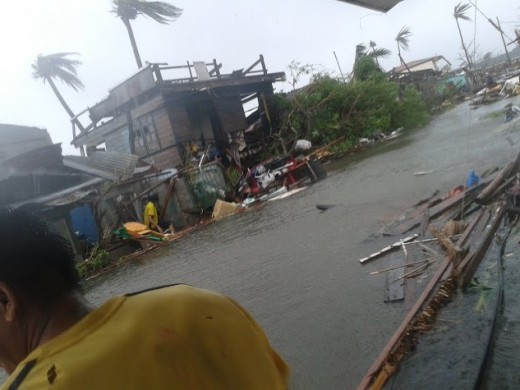
Climate
Land reform that includes sugar cane lands and coconut lands is the ultimate way to rehabilitate Tacloban
Tacloban
Tacloban now symbolizes the victim of climate change calamity. The super typhoon Haiyan that hit Tacloban in November last year is a product of climate change, brewed in the Pacific ocean that is the primary creator of El Niño (extreme heat). You may watch this video taken when super typhoon Haiyan was rampaging http://youtu.be/8NFXcelkkLc
In the world, Tacloban City is simply called “Tacloban.” The historic role of Leyte in WWII as the landing site of the Allied Forces whose jurisdiction was the Southwest Pacific theatre is eclipsed by the devastation wrought by the strongest typhoon in world history, Haiyan, also called Yolanda by the Philippines.
[On October 20,1945 the Allied Armed Forces under the command of Gen. Douglas MacArthur landed in Palo town. It was a continuation of the counter attacks against the Japanese invasion, started in Port Moresby, to Midway, to Saipan in the Pacific. The armed force was accompanied by the US navy under the command of Adm. Chester Nimitz. The naval battle in Leyte Gulf between the US navy and Japanese fleet turned out to be the greatest in history. In the duration of WWII Pacific theatre, the command was split between Gen. MacArthur and Adm. Nimitz, except since the surrender of Japan in August 1945 when Gen. MacArthur was made Supreme Commander (Hunt, F. The Untold Story of Douglas MacArthur. 1954)].
Tacloban is the focus of world attention. However, Yolanda had wreaked havoc on Western Samar, Eastern Samar, Leyte, Cebu, Bohol, Negros, and Iloilo. Yolanda first landed in Western Samar, crossed the Visayas, and exited in Palawan province then blew into Vietnam and mainland Asia.
Relief donations have concentrated on Tacloban. Rehabilitation work had been distributed to the other provinces.
Most of the victims of Yolanda were residing along the shores of Tacloban City, Tanauan, Palo and other southern towns of the western side of Leyte. In the eastern side lie Ormoc City, Babay City and other towns.
Why were the lands near the shore heavily populated? These portions are not part of haciendas in Leyte. A hacienda is a vast track of land owned by one family or a clan. It originated during the Spanish colonial regime. At that time the king of Spain awarded vast tracks of land to favoured subalterns to ensure their loyalty. When the Filipino revolutionaries liberated the Philippines, these haciendas were not broken up for redistribution to Filipinos who could cultivate the land for crop production. These haciendas passed on from one landlord to another by inheritance up until the present.
There are only about five clans that own the whole of Leyte province. These haciendas are planted to sugar cane and coconuts.
Land reform
There has been a legislation to break up haciendas started in the 1960s initiated by then Pres. Diosdado Macapagal. This is called the land reform law. However, the owners of sugar lands and coconuts lands have been more powerful than owners of rice lands. That is why sugar lands and coconut lands have been excluded in the land reform law. Therefore, the haciendas in Leyte have remained intact.
The haciendas have deprived a lot of peoples in Leyte of pieces of land to own. Even if they had the capacity to buy no lots are available.
So most Leyteños are forced to construct houses along the shores, from the waterline to about 50 meters landward. The main reason is that this area is free for them in the sense that it is owned by the state of the Philippines. That is, no part of this area can be titled to them as private property. The government did not drive them away either.
From time to time we read news of the slow pace of rehabilitation in Tacloban. We hear complaints of lack of food supply, health care and electricity.
There had been muted complaints of the lack of pieces of land simply because the fisher folks do not have enough money. Such poverty is traced back to haciendas that have deprived them of resources to better their lives.
Self rehabilitation
In the census of 2007, Leyte had a population of 1,724,240. Some 51.3% were males and some 48.7% were females. There were 1,717,519 households. Out of 100 people of working age, 75 were dependents, 9 of whom were in old age. Only 25 were gainfully employed.
If haciendas had been redistributed it could have resulted in: one, the able dependents could have substantially contributed to means of livelihood of the family by farming; two, human population would not have congregated along seashores; three, houses could have been made of materials stronger than those devastated by Haiyan. four, typhoon victims could rehabilitate their conditions by themselves with little support; five, standard of living of Leyteños could have been higher.
It has been convenient for Leyteños to reside near the sea as fishing is a main source of livelihood. Leyte has 40 towns and 3 cities: Tacloban City, Ormoc City and Baybay City. Tacloban City is the most densely populated.
Petty rivalry and embarrassment
From time to time, we see on television Leyteños converging into rallies to demand for faster rehabilitation work. It is more likely that these are a means to embarrass the national leadership. Mayor Eduardo Romualdez of Tacloban City is a member of the Romualdez family, a prominent member is Imelda Romualdez Marcos, widow of the deposed dictator Ferdinand Marcos, Sr. Imelda is now representative of Ilocos Norte, the province of Marcos, Sr. and lorded over by Senator Ferdinand Marcos, Jr. and Imee Marcos as governor.
The father of Pres. Benigno Simeon C. Aquino III, former senator Benigno Aquino, Jr., was assassinated in August 1984 by a military squad. Marcos, Sr. was then dictator of the Philippines. The five members of the military squad that assassinated Aquino, Jr. had been tried in court and jailed. About two years ago they were pardoned. However, they did not reveal the mastermind of the assassination. One suspected mastermind was Gen. Fabian Ver, former chief of staff of the armed forces of Marcos, Sr. and close associate of Imelda. When Marcos, Sr. was deposed and given political sanctuary in Hawaii, USA, Gen. Ver went into hiding in Thailand. He surfaced when he was dying from a disease. He died without revealing the mastermind of the assassination who up until now is unknown.
In peoples' mind, there is a latent grudge between the Romualdez clan and the Aquino clan. Some people speculate that the protest rallies against slow pace of rehabilitation of Tacloban City is a way to embarrass Pres. Aquino, III. This is an example of petty rivalry among members of the ruling class. They are united by the goal to dominate the poor.
Piece of land
A main feature of rehabilitation efforts in Leyte is to set up new housing and habitat in two hectares of land. A news item had it that the mayor of Tanauan town was glad that a non-government organization, Kalinga, has volunteered to buy two hectares in his town for the purpose. This only proves the lack of pieces of land for residential purposes for constituents of the town.
Several victims of super typhoon Yolanda have moved out from Tacloban City and have set up residence in Cebu and other provinces, including Metro Manila.
However, residents know that haciendas stretch from north to south of the province. Now the government prohibits the construction of houses within 50 meters of shore land as a way to prevent destruction from sea surges or tsunamis. A lot of people are at a loss where to construct houses.
Even the national leadership, including Pres. Aquino, III, is not saying that the ultimate solution to the problem of rehabilitation of Tacloban lies in the redistribution of haciendas. The reason is that Pres. Aquino, III is part of the ruling class whose base of power is the hacienda system.
Of course, it is not within the power of Pres. Aquino, III to declare land reform on sugar lands and coconut lands. It is within the power of Congress by means of legislation. However, Congress is comprised of members of the ruling class.
Video of super typhoon Haiyan rampaging
Another photo of damage done by supertyphoon Haiyan/Yolanda (Photo by Bonn Clemencio)




